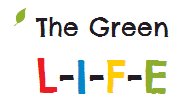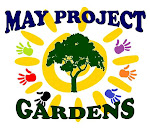 |
| Mix Salad Leaves |
Cabbage, Spinach, Chard, Salad leaves, and Comfrey are plentiful in the garden this month. We've been getting very creative with these ingredients and when combined with a few skipped vegetable we end up with some amazing meals. Over the past weeks we've seen a lot of growth as the average temperature increases. The Food Forest Garden is really looking alive now. Both the fruit trees and bushes are doing well. We are experimenting with a technique for gardening in small spaces by creating a poly-culture bed. We'll be growing ten or more vegetables in less than 4sqm. So far so good. We had a few run ins with snails and slugs but managed to keep the bed going. We've planted; garlic, parsley, lettuce, onion, tomato, potato, courgette, broad bean, and we added some vertical space for runner bean, and cucumber.
 |
| Chard (leaf beet) |
 |
| Poly-culture: 10 diff veg in 4sqm |
Another experiment we are conducting is using different mulching techniques. We have been given the use of an allotment space near here and now have the space to player around with other methods of gardening. Our little plot at Dean City Farm (DCF) is also coming along nicely. Putting down straw as a mulch has been a big help in controlling weeds and holding moisture. It's great that we have these new spaces to work on and I am sure we will learn alot from it.
 |
| Strawberries at DCF plot |
We've started putting out our summer crops. This season we'll have tomatoes, sweet corn, courgettes, onions, potatoes, runner beans and broad beans growing on the main outside beds, and, tomatoes, peppers, melons, aubergines and cucumbers in the polytunnel. We're growing most of our crops from transplants which we start off in our mini-greenhouse nurseries, this allows us to design the garden very efficiently (spacings, light, shade, etc). The poly-culture bed is a good example of what can be achieved using transplants and good design.
 |
| Food forest garden |
We harvested most of the chard and spinach from the polytunnel and replaced them with tomatoes and aubergines. We like to leave the roots of the previous plants in the ground when harvesting. I believe in giving back to the soil as much of more than what's been taken. With the chard, for example, we harvest all but two of the plants by cutting cut the entire plant as close to the ground as possible, leaving the roots in the ground. The two that remained are for seed production. We then add a generous layer of worm rich compost (made on site). We give the worms and other creates present in the compost time to settle in. Then we add tomato plants to the bed and water in. Job done. Transplants enables you to be flexible and helps keep your beds active. We had hope to have some pumpkins and squashes planted up in the Forest garden but we lost all our seedlings during a very hot few days. We are now playing catchup and hope we will be able to get some more germinated in time. We produced a lot of food from the garden this spring, and I think summer's going to be even better.







